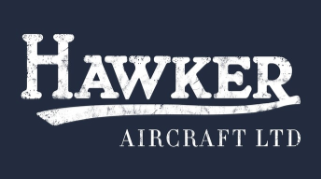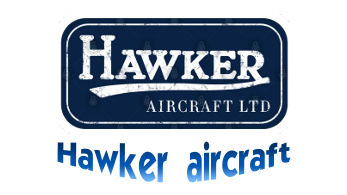Hawker aircraft Ltd.
Hawker Hind Mk.1
 |
|
| General information | |
|---|---|
| Type | Light bomber, trainer |
| National origin | United Kingdom |
| Manufacturer | Hawker Aircraft Limited |
| Designer | Sydney Camm |
| Primary users | Royal Air ForceIran New Zealand South Africa |
| Number built | 528 |
| History | |
| Manufactured | 1935–1938 |
| Introduction date | 1935 |
| First flight | 12 September 1934 |
| Retired | 1955 (Afghanistan) |
| Developed from | Hawker Hart |
| Variants | Hawker Hector Hawker P.V.4 |
|
|
|
|
|---|
.
History Hawker Siddeley Aircraft
Hawker Hind Mk.1
Manufactured 1935–1938
Introduction date 1935
First flight 12 September 1934

The Hawker Hind is a British light bomber of the inter-war years produced by Hawker Aircraft for the Royal Air Force. It was developed from the Hawker Hart day bomber introduced in 1931.
Design and development
An improved Hawker Hart bomber defined by Specification G.7/34, was purchased by the RAF as an interim aircraft, while more modern monoplane bombers such as the Fairey Battle were still in development. Structural elements were a mixture of steel and duralumin with the wings being fabric covered; the main differences compared to the earlier Hart was a new powerplant, (the Rolls-Royce Kestrel V) and the inclusion of refinements from the earlier derivatives such as the cut-down rear cockpit developed for the Demon. The prototype (Serial number K2915) was constructed very rapidly due to Hawker's development work for other proposals and made its first flight on 12 September 1934. A variety of changes were subsequently incorporated ("ram's horn" exhaust manifolds, Fairey-Reed metal propeller and engine improvements) with the first production Hind (K4636) flown on 4 September 1935.
Operational history

The Hind went into service in November 1935 and eventually equipped 20 RAF bomber squadrons. A number were also sold to foreign customers including Afghanistan, the Republic of Ireland, Latvia, Persia (Iran), Portugal, South Africa, Switzerland, and Yugoslavia. By 1937, the Hind was being phased out of front line service, replaced by the Fairey Battle and Bristol Blenheim, with many of the Auxiliary Air Force squadrons changing their role to fighter or maritime patrol units. At the outbreak of the Second World War, 613 Squadron retained the Hind for army co-operation before re-equipping with the Hart derivative, the Hawker Hector, in November 1939.
Variants

- Hind Mk I
- Two-seat light bomber aircraft for the RAF, powered by a 477 kW (640 hp) Rolls-Royce Kestrel piston engine.
- Afghan Hind
- Similar to the Hind Mk I, four aircraft fitted with Rolls-Royce Kestrel V engines, plus another four aircraft fitted with Kestrel UDR engines; eight built for Afghanistan.
- Latvian Hind
- Two-seat training aircraft, powered by a Bristol Mercury IX radial piston-engine; three built for Latvia.
- Persian Hind
- Modified version of the Hind Mk I, powered by a Bristol Mercury VIII radial piston-engine; 35 built for Persia.
- Portuguese Hind
- Similar to the Hind Mk I, two aircraft built as bombers, two aircraft built as trainers; four built for Portugal.
- Swiss Hind
- Two-seat unarmed communications aircraft; one built for Switzerland.
- Yugoslav Hind
- Modified version of the Hind Mk I, two aircraft fitted with Rolls-Royce Kestrel XVI piston-engines, one aircraft fitted with a Gnome-Rhone Mistral engine; three built for Yugoslavia.
0
KmCeiling
0
KmCombat RANGE
0
KM/hAircraft Speed
0
Max Crew
Photo Gallery
Hawker Siddeley Aircraft
Hawker Hind Mk.1 - "Kestrel’s Keeper"
Manufactured 1935–1938 First flight 12 September 1934


Hawker Siddeley Aircraft
Hawker Hind Mk.1 Manufactured 1935–1938 First flight 12 September 1934
General Info
-
-
-
- Crew: two
- Length: 29 ft 3 in (8.92 m)
- Wingspan: 37 ft 3 in (11.35 m)
- Height: 10 ft 7 in (3.23 m)
- Wing area: 348 sq ft (32.3 m2)
-
-
Powerplant
-
-
- Empty weight: 3,195 lb (1,449 kg)
- Max takeoff weight: (2,112 kg)
- Powerplant: 1 × Rolls-Royce Kestrel V water-cooled V12 engine, 640 hp (480 kW)
-
Performance
-
- Maximum speed: 185 mph (298 km/h, 161 kn) at 15,500 ft (4,700 m)
- Stall speed: 45 mph (72 km/h, 39 kn)
- Range: 460 mi (740 km, 400 nmi)
- Service ceiling: 26,400 ft (8,000 m)
- Time to altitude: 8 min 6 s to 10,000 ft (3,000 m)
Armament
-
-
- Guns: 1 × synchronised forward-firing .303 in (7.7 mm) Vickers gun and 1 × .303 in (7.7 mm) Lewis gun in rear cockpit
- Bombs: Up to 510 lb (230 kg) bombs under wings
-
Links to Youtube & Others
The Hawker Siddeley HS 748 (formerly Avro HS 748) is a medium-sized turboprop airliner originally designed and initially produced by the British aircraft manufacturer Avro. It was the last aircraft to be developed by Avro prior to its absorption into Hawker Siddeley.
Hawker aircraft Ltd.
Hawker Hind Mk.1
Another supportive feature of the 748 was a design decision to adopt straightforward systems and use proven components where realistically possible.
Youtube Link
During 1976, Eric Johnson, sales engineering manager of Hawker Siddeley Manchester, stated that the company was studying options for equipping a model of the HS 748 with turbofan engines.













.svg.png)